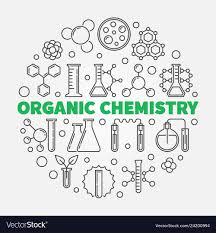- Teacher: Dr. Surendran Parambadath GCP_Chem
- Teacher: Dr. P. Venugopalan
- Teacher: Dr.Binitha.N.N _GCP
- Teacher: Resmi M. R.
- Teacher: Dr.Binitha.N.N _GCP
- Teacher: Roy.K.B _GCP
- Teacher: Usha.M _GCP
Organic chemistry is the study of the structure, properties, composition, reactions, and preparation of carbon-containing compounds, which include not only hydrocarbons but also compounds with any number of other elements, including hydrogen (most compounds contain at least one carbon–hydrogen bond), nitrogen, oxygen, halogens, phosphorus, silicon, and sulfur. This branch of chemistry was originally limited to compounds produced by living organisms but has been broadened to include human-made substances such as plastics. The range of application of organic compounds is enormous and also includes, but is not limited to, pharmaceuticals, petrochemicals, food, explosives, paints, and cosmetics.

- Teacher: Dr. Surendran Parambadath GCP_Chem
- Teacher: Dr. P. Venugopalan
- Teacher: Dr.Binitha.N.N _GCP
- Teacher: Dr.Manoj.T.P _GCP
Physical chemistry is the study of macroscopic, and particulate phenomena in chemical systems in terms of the principles, practices, and concepts of physics such as motion, energy, force, time, thermodynamics, quantum chemistry, statistical mechanics, analytical dynamics and chemical equilibrium.
Physical chemistry, in contrast to chemical physics, is predominantly (but not always) a macroscopic or supra-molecular science, as the majority of the principles on which it was founded relate to the bulk rather than the molecular/atomic structure alone (for example, chemical equilibrium and colloids).

- Teacher: Resmi M. R.
- Teacher: Dr.Binitha.N.N _GCP
- Teacher: Roy.K.B _GCP
- Teacher: Usha.M _GCP
